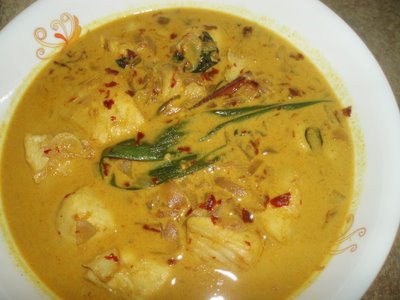 |
This fish fry picture is click bait, more on this below |
I'm not an Internet video person. I still prefer text and pictures. However, all the experiments I'm recording here are taken from videos. They all had useful and clear instructions.
A couple of weeks ago, I ground a fresh batch of ginger-garlic paste. Our cook had told me there was nothing to it - and that a dash of turmeric and salt would act as preservative. Still, why have the Internet at your fingertips if not to browse it for no good reason? So I looked at recipes for ginger-garlic paste and came across several. I'm not a video person, but I was curious to see what the visual value of grinding ginger-garlic paste was - isn't it just a few whizzes in the mixie - so I clicked on them. There was little more than I imagined in those videos, but one of them had a helpful tip. The vlogger had advised roasting a bit of salt till it lost its ability to extract water from the ginger and garlic. (That's when it changes colour.) The objective: Not to dilute the paste with the water that will keep oozing because of the unroasted salt. This vlogger also recommended adding some heated and cooled oil. So I did that.
Doesn't my ginger-garlic paste look good and undiluted? Let me know if you can see any motor lubricant in there. I seem to have ground it for too long or probably I overloaded the jar - there were streaks of greenish-black oil on the grinder which I only noticed a couple of hours later. I poked about carefully in the paste and didn't notice any contamination. I still feel a streak of concern whenever I use it, though.
I'm unable to locate the video now but will add the link when I find it.
Then, the lip-smacking korameenu fish fry that you see up there, that's from this video.
It uses just a little bit of oil relative to the amount of fish so I was very sceptical whether it would work. However, something in me pushed me to trust it and I was not disappointed. It worked like a charm. I forgot to add the sesame powder but to me, it was like the taste of home. I'm not sure, however, that the English name for this is red snapper. I think it's murrel, but I could be wrong. This is what is called 'viral' in Tamil.
This is garlic pickle, not halwa. Those are garlic cloves, not cashews. A couple of friends said it looked like that when I sent them pictures on the phone.
I needed only two cups of garlic cloves for the ginger-garlic paste. I'm finding ways to consume it before it goes all brown and black and shrivels up. I hit upon the idea of a garlic pickle the way mango is pickled in Andhra homes, tasting of chilli powder and mustard and gingelly oil, but none of the recipes I came across gave me the confidence it would turn out that way - and I know nothing of pickling to be instinctively experimental about it. So I looked for what felt like an interesting recipe and settled for this, which is a garlic pickle with cloves, cinnamon, cardamom and sesame, an unusual formula for pickle.
The narration is in Telugu and there are no sub-titles. Nevertheless, the visuals are good enough - you can identify the ingredients as well as the quantities. There is a tip about how long to fry the garlic - till a fold appears, he says, but I didn't notice any fold. I did think the texture changed. Something like tiny goosebumps or a certain roughness appeared on the surface (it should not brown), and then I switched it off and left it to cool. It tasted exactly like a prawn pickle an aunt of mine had made and given us. It's an interesting taste and I'm glad to have rediscovered it.





